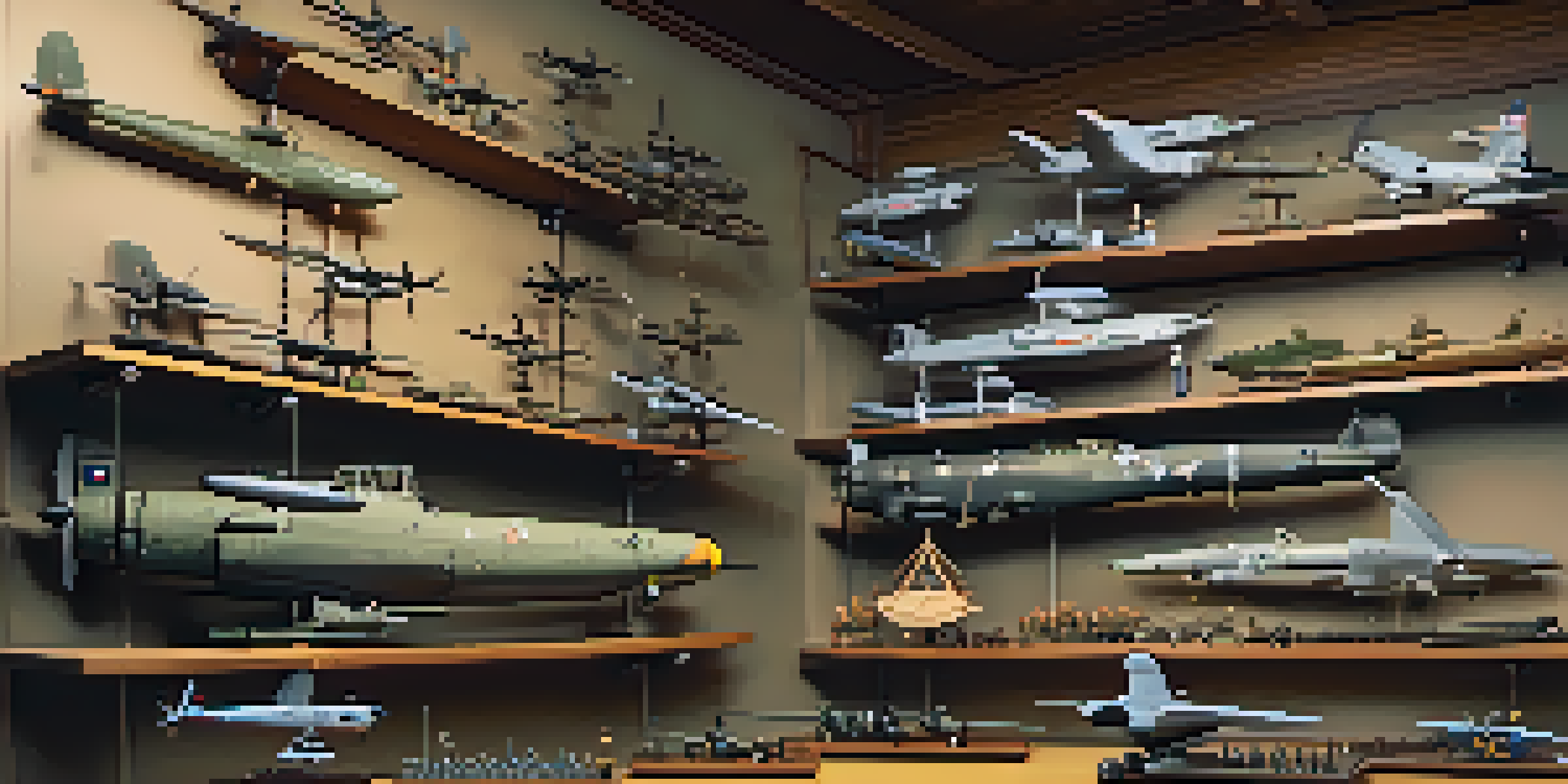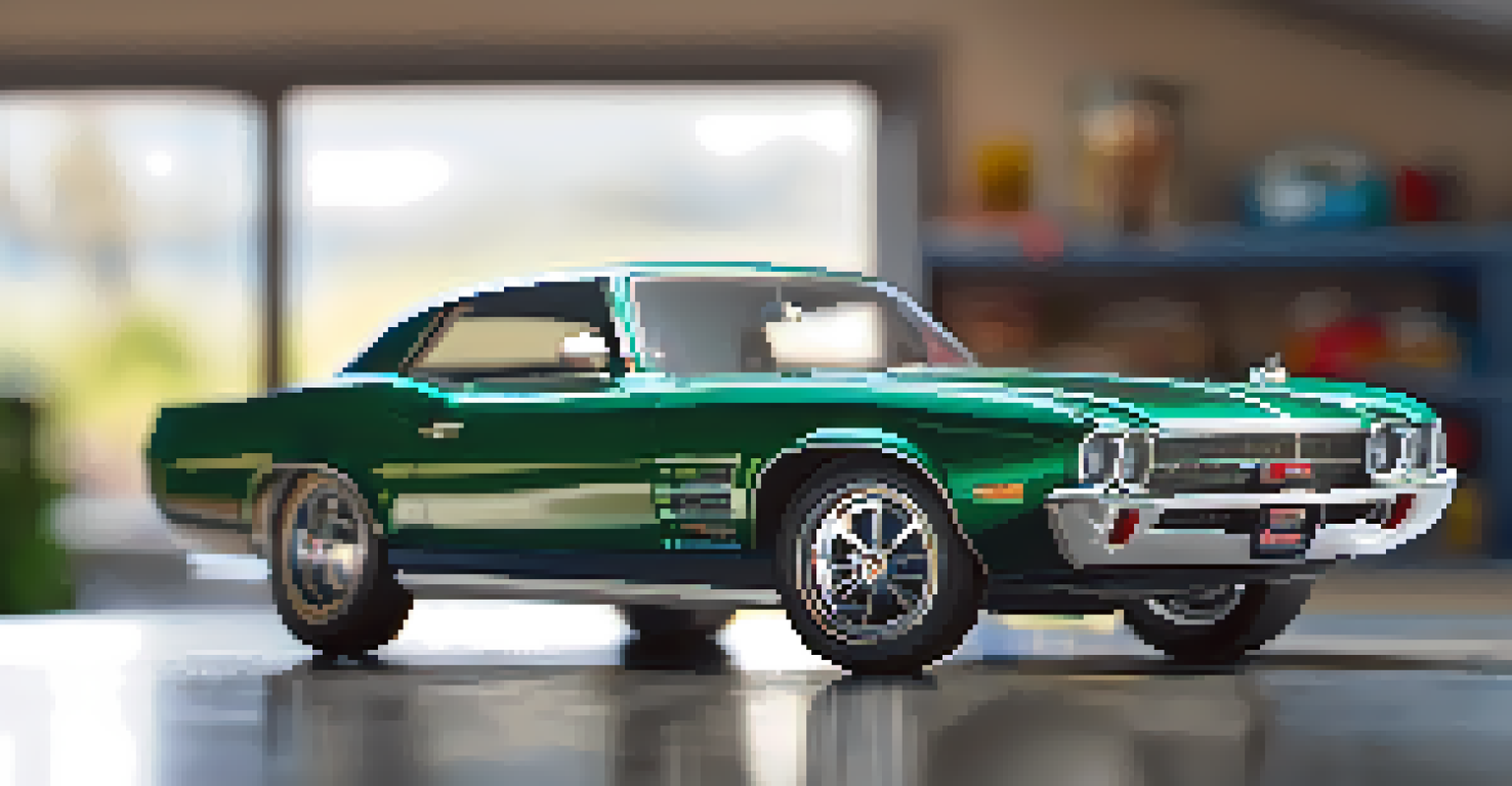How to Choose the Right Scale for Your Models

Understanding Model Scales: What Do They Mean?
When it comes to modeling, scale refers to the ratio of the model's size to the actual object it represents. For example, a 1:100 scale means the model is 1/100th the size of the real object. Understanding this concept is crucial as it affects everything from detail to compatibility with other models.
The details are not the details. They make the design.
Different scales can evoke different feelings and focus within a model. A larger scale might highlight intricate details, while smaller scales might emphasize the overall shape and form. Hence, knowing the scale helps you convey the right message in your model.
To put it simply, think of scale as the lens through which you view your model. Just like a photographer chooses a lens to capture a specific perspective, picking the right scale allows you to showcase your model's strengths effectively.
Popular Model Scales: A Quick Overview
In the world of modeling, some scales are more popular than others. Common scales include 1:12 for dolls and dioramas, 1:35 for military models, and 1:72 for aircraft. Each scale offers its unique advantages and challenges, depending on the model's purpose.

For instance, 1:24 scale is excellent for detailed car models, allowing enthusiasts to appreciate every curve and feature. On the other hand, 1:144 scale is ideal for large aircraft models, making them more manageable for transport and display.
Understanding Model Scales
Model scale determines the size ratio of the model to the actual object, impacting detail and visual presentation.
Understanding these popular scales helps you narrow down options based on your interests. It's like being at a buffet—you want to know what's on the table before you fill your plate!
Consider Your Space: Display and Storage Issues
Before choosing a scale, think about where you plan to display or store your models. A larger scale requires more space, while smaller scales are easier to store on shelves or in display cases. Assessing your available space helps you avoid the regret of choosing a model that won’t fit.
Good design is a lot like clear thinking made visual.
Additionally, consider how the scale will affect the overall aesthetic of your display. A collection of 1:72 models may look harmonious on a shelf, but mixing scales can create a cluttered and confused visual appearance.
Ultimately, your choice of scale should align with your living space. Just like choosing furniture, it’s essential to ensure that your models fit comfortably within your home’s design.
Your Skill Level Matters: Choose Accordingly
When selecting a scale, it's essential to consider your modeling skills. Smaller scales often require a steadier hand and more precision, while larger scales may be more forgiving for beginners. Understanding your skill level can save you frustration down the line.
For instance, if you're just starting out, a 1:48 scale model might be more manageable than a tiny 1:144 scale. Larger models allow for easier handling and more room for mistakes, which is crucial when you're still learning the ropes.
Consider Display and Storage
Choosing the right scale involves assessing your available space to ensure models fit comfortably in your home.
In essence, your chosen scale should act as a stepping stone in your modeling journey. Choose one that challenges you but is still enjoyable to work with, as this balance encourages growth and satisfaction.
Compatibility: Ensuring Your Models Work Together
If you're building a collection or diorama, scale compatibility is vital. Models in different scales can look awkward together, disrupting the visual flow you aim to achieve. Ensuring all your models share the same scale creates a sense of cohesion and realism.
For example, if you're creating a scene with aircraft and vehicles, selecting all models in 1:72 will ensure they complement one another. This attention to detail can elevate your work from good to outstanding.
Think of it like assembling a puzzle—each piece must fit together perfectly to reveal the complete picture. Choosing compatible scales helps you achieve that seamless integration.
Future Expansion: Considering Your Long-Term Goals
When selecting a scale, think not only about your current projects but also your future modeling aspirations. If you plan to expand your collection, choosing a popular scale can provide more options for future additions. This foresight can save you from the hassle of integrating new models later on.
For instance, if you start with a 1:35 military vehicle, you may want to consider future purchases in the same scale. This way, you can create an expansive battlefield scene without worrying about mismatched sizes.
Budget and Future Planning
Balancing your budget with scale selection is crucial for sustainable modeling, allowing for future expansion of your collection.
Ultimately, planning for the future is like planting seeds for a garden. Choosing the right scale now can lead to a flourishing collection down the line.
Budget Considerations: Balancing Cost and Scale
Budget is another crucial factor when choosing the right scale for your models. Larger scales often come with a higher price tag due to increased material and detail. Balancing your desire for detail with your budget can help you make a wise choice.
For example, if you're on a tight budget, 1:72 scale models might be a better option since they tend to be less expensive compared to larger scales. This allows you to build your collection without breaking the bank.

Think of your budget as the foundation of your modeling journey. A solid financial plan allows you to enjoy this hobby without stress, ensuring you can invest in quality models that truly resonate with your vision.